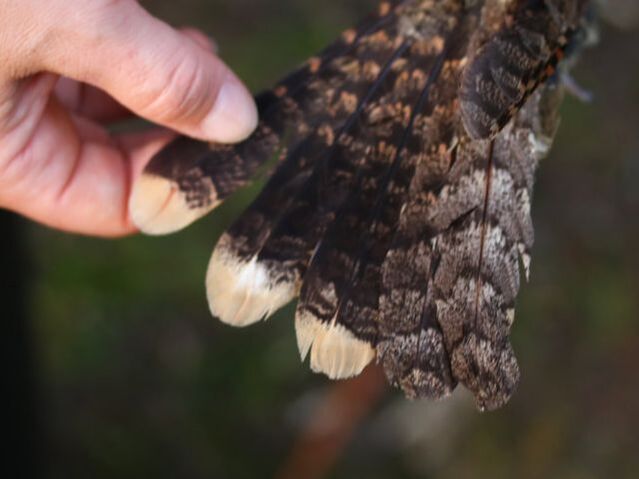Enjoying our blogs?Your support helps BSBO continue to develop and deliver educational content throughout the year.
|
|
While we’re certainly glad to be in a new year, 2021 marked an historic leap for BSBO’s research efforts and our ability to support research occurring across the hemisphere. Amid the uncertainty of COVID, our spring efforts were scaled back to focus on the breeding and migration of Prothonotary Warblers (PROW) in our primary migration research station in the Navarre Marsh unit of Ottawa National Wildlife Refuge. >>>Read more about this ongoing project HERE. This new project utilizes nanotag transmitters and the Motus network of automated radio telemetry towers to track tagged birds following their release. This wasn’t the first time BSBO had deployed nanotags on birds; however, it was our first project as lead investigators, leading to the installation of our first receiver tower. The advantage of these towers and the Motus network is the ability to track not only our birds autonomously, but to detect tagged birds from other researchers and supply them with data necessary for their projects. Even with detailed planning, projects of this magnitude rarely run smoothly the first year. Due to technical difficulties, BSBO's first tower was unfortunately unable to record deployed nanotags in conjunction with our first year of PROW tagging. (We eagerly await the upload of data from other towers in the region to see if tagged Prothonotary Warblers from our site may have spent their summer in other local marshes.) Once we identified the technical issue, BSBO was able to deploy a new radio receiver at our tower in July. Since this deployment (and really since its installation), the Navarre tower has withstood some major storms and wind along the lakeshore and continues to stand strong. So far, the tower has detected 10 tagged birds passing through the marsh, allowing us to document their length of stay. One of these birds was a male Prothonotary tagged during BSBO's PROW project in May, who was detected immediately following the deployment of the new receiver on July 12. This male spent the next 16 days in the marsh until he finally flew off, molted off his nanotag, or until the battery in his nanotag was depleted. Other detected birds were tagged by BSBO in conjunction with a project being investigated by Powdermill Avian Research Center of the Carnegie Museum of Natural History in Pennsylvania. This project is studying the survival and behavior of birds following window collisions. BSBO is the control group, tagging normal, wild-caught individuals. Species tagged by BSBO this fall included Ovenbird, White-throated Sparrow, and Gray Catbird. Following their tagging and release, many of these birds remained in the marsh for 1-4 days before departing. The sole catbird tagged this fall remained at Navarre from October 11 to 14 until it was detected again on October 18 in North Carolina, south of Asheville; a four-day journey of about 440 miles (as the crow/catbird flies). In addition to our own birds tagged this fall, on the night of September 28, an Eastern Whip-poor-will was picked up by our Navarre tower - our first non-BSBO tagged bird detection. This whip-poor-will was originally tagged by Elora Grahame of the University of Guelph in Ontario in August 2021, east of Lake Huron as an ASY (after-second-year, an adult hatched in 2019 or earlier) male. Elora is a Ph.D. candidate focusing on factors affecting migration rate, timing, routes, and stopover duration for Common Nighthawks and Eastern Whip-poor-wills. Elora was generous enough to provide further details about this detected bird and send over photos of him. You can follow Elora and her nightjar updates on Twitter @elora_grahame. Following his tagging in August, this whip-poor-will was detected by towers in southern Ontario by the end of September. Passing outside of Kitchner, London, and St. Clair National Wildlife Area, he would last be detected in Ontario on September 28 on the Point Pelee peninsula before being detected southwest across Lake Erie at our Navarre tower in Ohio. This detection not only exemplifies the collaborative power that the Motus network offers, but also showcases a migration route between Ontario and Ohio and a direct flight over the waters of Lake Erie.
After passing by the Navarre tower, this Eastern Whip-poor-will would not be detected again until October 16 outside of Galveston, Texas on the Gulf Coast. Towers become less prevalent south of this point and are absent from much of the Gulf Coast area of Mexico. So we (and Elora) may not find out where this bird eventually settles for the winter. But we’re both hopeful for his return through our region and to his breeding territory in 2022. With one year of this new technology under our belts we’re excited for what the upcoming year will bring (without technical difficulties!). The Navarre tower will run throughout the winter and plans are in the works to install our second tower south of the lakeshore before spring. The BSBO research department will also be a part of a much larger nanotagging collaboration this upcoming spring migration, so check back soon for future updates! Our sincere thanks to all those who so generously supported this invaluable research.
0 Comments
|
AuthorsRyan Jacob, Ashli Gorbet, Mark Shieldcastle ABOUT THE
|





